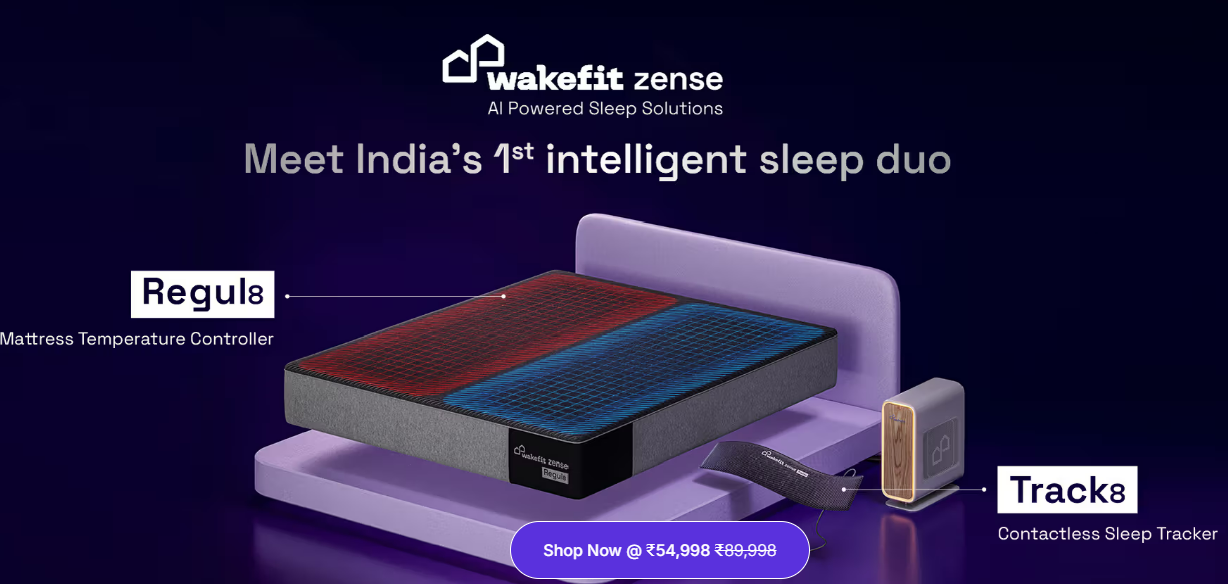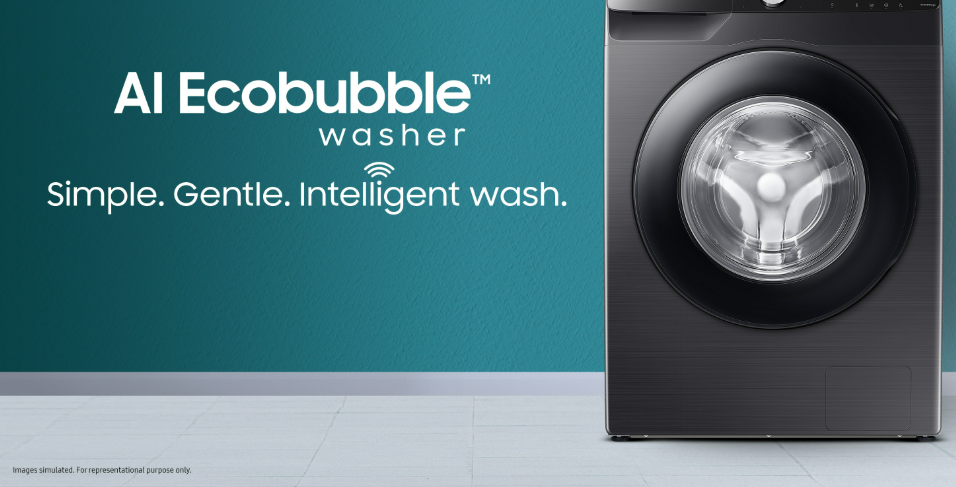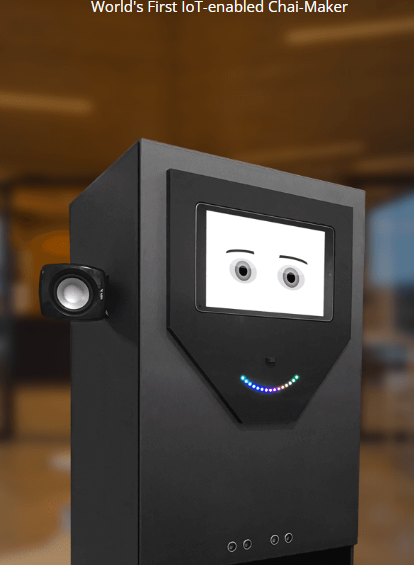From AI in toothbrush to another in your shaver – India’s AI obsession has crossed peak absurdity; after all, who needs common sense when you can have artificial intelligence says Satyen K. Bordoloi
Indians living in India may not have invented AI, but our genius marketers know how to sell it.. in everything. They’ve made your toothbrush smarter than you, given your shaver trust issues, and enabled your washing machine so much that it can moonlight as a therapist.
Welcome to India’s golden age of AI-washed nonsense, where your pressure cooker won’t just cook you a meal but serve your crushed ego on a platter with its superior algorithm. All thanks to a new mantra India’s consumer tech revolution has found: Slap ‘AI’ on everything, double the price, and watch uncles brag about their smart yoga mats and aunts gossip about their AI mixer grinder.
This phenomenon, where companies claim their product has AI capabilities when it’s essentially the same old toaster with a Wi-Fi connection and a superiority complex, is known as AI-washing. It is when companies slap “AI” on products that don’t really use it, just for marketing purposes. This is also when companies falsely claim their products use AI to exaggerate their capabilities.
A year ago, I wrote about AI washing. That Sify article was about tech companies AI washing you. What I’ve realised since then is that this sin is not limited to just them. AI washing has emerged from the tech sector and gone mainstream, infiltrating consumer goods and services.

I understand a poorly functioning chatbot powered by ChatGPT. It can have some value. But what good is AI in a toothbrush? Will it shame me for missing a spot? Send me a passive-aggressive text because I brushed 10 seconds less. Why can’t my toothbrush just stay a stick with bristles on it rather than becoming a glorified timer with a superiority complex? The answer could be as simple as companies wanting to stand out, earn more money, make it seem like they are at the cutting edge of whatever they do, or that they are more sophisticated than they actually are.
AI Washing: The Global Epidemic of Absurdity: The phenomenon isn’t limited to toothbrushes. Oh no. The AI stampede has trampled every conceivable product category. Take shavers. Once, a razor was simply a blade on a sturdy handle. Now, it’s an “AI-powered grooming system” that uses “facial recognition” to map your stubble. Apparently, your five o’clock shadow is a complex mathematical equation that only machine learning can solve.

And those dumb boxes that clean your underwear dare you to call them washing machines. They’re sentient beings that “understand” your fabric’s emotional needs. They don’t just wash; they learn. They adapt. They judge you for forgetting to separate the red t-shirt from your white chikankari kurta.
And why should we leave coffee makers alone? Today, your morning brew is no longer just hot water and ground beans—it’s an “AI-driven caffeine experience” that “curates” your perfect cup based on your heartbeat, weather, and how many times you hit snooze. Never mind that your grandmother’s simple filter coffee contraption has been doing the same job for half a century without needing to “learn” when she gets grumpy. And what about the looming threat of AI-infused socks? Yes, they don’t exist yet but give it some time, and your left toe will have its own DeepSeek interface recommending pedicures.

The global market is drowning in a sea of AI-labelled nonsense. AI-washing is the new snake oil, the panacea to every lazy marketer out there. However, it has worsened in India.
India’s AI Obsession–Forget Chatbot, Welcome Chaat Bots: If Shahid Kapoor can have an AI robot as a girlfriend that mummy can come to accept (Teri Baaton Mein Aisa Uljha Jiya), surely dadi won’t mind a bit of chaat made by a chatbot. That seems to be the idea behind the great Indian AI-in-everything boom. Indian consumer brands are jumping onto the AI bandwagon with the fervour of a Mumbai local commuter desperate to enter a super-dense-crush-load bogie and hang on to dear life for the rest of the journey.

Walk into an electronics store, and you’ll find smart mats that “integrate AI-powered features” that promise to correct your Surya namaskar posture using “real-time feedback.” Never mind that Patanjali (the actual yog-guru, not the modern, greedy one who’s appropriated his name) perfected it a few millennia ago without algorithmic intervention. Then, there are multiple “AI chai maker” devices that can “deliver great-tasting hot beverages every time.” Because nothing says authentic Indian tea like a machine learning model trained on 10,000 samples of digital tea leaves and passive-aggressive customer reviews.
And what about that brilliant product that Boston hates, but you’ll find in multiples in every home (single me has four in my tiny house) – pressure cooker? Even the humble cooker hasn’t escaped an AI makeover with cookers that do “3D food scanning” and have “remote temperature sensing, instant sear, automatic reverse sear” flying off the selves.
Cooking rice, a process refined in billions of Chinese and Indian homes over 9000 years, is now being “disrupted” by gadgets that boast “neural network-driven precision.” Because clearly, your dadi’s handi was just winging it all these years.
And you know what’s the funniest bit I discovered when I checked out the manuals for a few of those products: many of these so-called AI features are little more than basic automation or pre-programmed settings. But hey, why let facts get in the way of a good marketing pitch? If slapping “AI” on the box doubles the price, marketers will try to triple it with a “blockchain-enabled” ladle thrown into the mix.
EdTech: AI as the New Guru (with a Side of Gyaan): And my personal pet peeve: India’s booming edtech sector that has plunged headfirst into the AI-washing abyss. Every online learning app now claims to offer “AI-driven personalised learning,” which could mean anything, from genuinely adaptive algorithms to glorified multiple-choice quizzes that simply reshuffle questions if you fail. “Oh, you got Question 3 wrong? Here’s Question 3 again, but with a different font. You’re welcome.”
Then there are the “AI career predictors,” apps that ask you three questions— “Do you have a piggy bank?” “Are you bad at math?” “Do you cry during Excel spreadsheets?”—before declaring, “You were born to be a numismatic!” Never mind that you have to scramble over to Google to find what the word means. These apps (thankfully, the predatory Byju went bankrupt) thrive on the desperation of Indian parents who have already mapped their child’s life from IIT to “settled in the US,” but let’s not let a chatbot pick their destiny.

Government 2.0: AI, Aapke Dwaar!: Even the many governments in India aren’t immune to AI washing. Policy speech anywhere, even in Kathewadi where the only AI they know is the one the PM so brilliantly elucidated before Bill Gates: aai (mother), now includes a grand vision for AI, whether it’s “AI-powered traffic management” (translation: slightly better CCTV cameras) or “AI-based farming solutions” (translation: a WhatsApp group for weather updates).
State governments have launched “AI-driven grievance redressal systems” that promise to resolve court cases faster, although many citizens report receiving automated replies stating, “Your case is important to us. Please hold while we adjudicate for the next 500 years.” Milords, please don’t hold me in contempt of court, for I am only kidding. You please enjoy your summer vacation while we wash everything with AI.
To be fair, India is making groundbreaking advances in AI across almost every field. Startups are utilizing machine learning to detect diabetic retinopathy in rural clinics, while fintech companies and the IT departments of central and various state governments are leveraging AI to combat loan fraud. But for every genuine innovation, there’s a “smart” kolhapuri chappal claiming to count your steps and critique your walking style.
Why AI Washing Works: The Halo Effect and the Art of Selling Fairy Dust: The success of AI washing boils down to two things: the Halo Effect and FOMO (Fear of Missing Out). The moment a product screams “AI,” consumers believe it’s been blessed by the ghost of Alan Turing himself, regardless of whether the “AI” is just a rechristened timer or a random number generator.
Marketers know this, so they slap the label on everything from blenders to bidets. It’s the same logic that made “blockchain” and “metaverse” the hot buzzwords some time ago before everyone realised they didn’t actually need a blockchain-based salad.
FOMO plays its part, too. No company wants to be a Luddite, still selling “non-AI” products in 2025, a year where, as I wrote, super helpful robots are just a block away from crowding your supermarket. If your competitor’s fridge has “AI,” yours better have one, too—even if that just means a slightly smarter ice dispenser. The result? A race to the bottom where “AI” becomes synonymous with “has a microchip,” and genuine innovation gets lost in the noise.
The Dark Side: When AI Washing Erodes Trust: The bigger issue with AI washing isn’t just that it’s absurd. The problem is that it’s harmful. By trivialising the term ‘AI’, companies risk diluting the value of actual AI advancements. When consumers realise their “AI toothbrush” is about as intelligent as a potato, they become sceptical of all AI claims, including ones that matter. Imagine the loss of a farmer who ignores a legitimate AI-powered crop disease detector just because his last “AI” product was a “smart” shovel that beeped near worms.
This erosion of trust has real consequences. Investors, too, grow wary, diverting funds from genuine AI projects to flashy gimmicks. Why fund a cancer-detection algorithm when you can bankroll an AI-based pani puri cart that recommends toppings based on your Instagram feed?
How to Spot AI Washing (Without Turning a Cynic): To avoid getting scammed by AI-labeled fluff, begin by asking just three simple questions:
- Is this feature truly AI-driven, or is it merely automation? If your “AI hairbrush” is just a sensor detecting split ends, that’s just a ₹2000 comb with delusions of grandeur.
- What problem is AI solving here? Does your broom really need machine learning? Or is this just a plot to make you buy a subscription for an app?
- Is the company transparent? If a company’s explanation of “AI” sounds like a legal document or worse, a ChatGPT-written script with the usual overuse of adjectives and adverbs, avoid it like the plague.
Will AI washing ever stop? Unlikely. As long as people equate “AI” with magic, companies will keep selling sci-fi tales in their user manuals. So, a significant part of the problem is not just these companies, but also you and me. We must understand that being ‘smart’ is overrated, both in life and in our gadgets, which means that some things – including our reactions at times – are better left dumb.
Your toothbrush just needs to clean your teeth without being a supercomputer. Your washing machine just needs to wriggle your clothes until they’re clean without trying to understand your underwear’s ‘feelings’. And your chai doesn’t need an algorithm to be good; it just needs your mother’s/partner’s love, patience and your wisdom to understand that you need to give them a break by trying to make it yourself once in a while as well.
In case you missed:
- PSEUDO AI: Hilarious Ways Humans Pretend to be AI to Fool You
- Rufus & Metis Tell Tales of Amazon’s Delayed AI Entry
- AI as PM or President? These three AI candidates ignite debate
- Rise of Generative AI in India: Trends & Opportunities
- You’ll Never Guess What’s Inside NVIDIA’s Latest AI Breakthrough
- AIoT Explained: The Intersection of AI and the Internet of Things
- OpenAI’s Secret Project Strawberry Points to Last AI Hurdle: Reasoning
- Apple Intelligence – Steve Jobs’ Company Finally Bites the AI Apple
- The Path to AGI is Through AMIs Connected by APIs
- The Rise of Personal AI Assistants: Jarvis to ‘Agent Smith’









